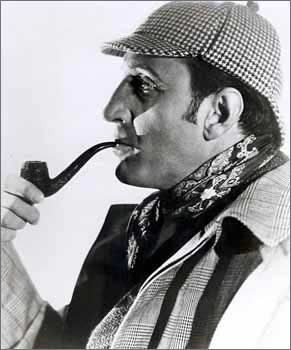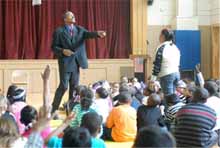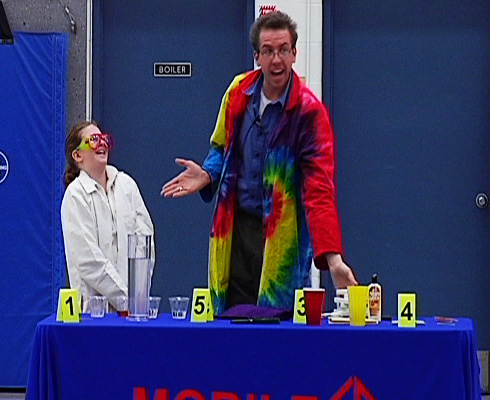
How do you know which programs and how many presentations to do for your school? This is a question which comes up with any Elementary school or Middle School looking for ideas for school assemblies. Well, as famous detective Sherlock Holmes used to say: “Elementary, my dear Watson!, Elementary!”
Have you talked to a twelve year old lately? Have you tried to read a bedtime story to them from a book designed to be read to a 6 year old? How did that work out for you? Not so good, huh?
Kids minds change as they age. Duh! Profound statement there, right? Of course they do! And what appeals to and entertains the mind of a student in Kindergarten is radically different from what entertains a seventh grader. Even the differences from Kindergarten to 3rd grade are profound.
So why is it that so many schools think nothing of having a elementary enrichment program for an audience of all grades, from Kindergarten through eighth grade? It always amazes me! Sure, there are great school assembly performers who can pull this off and the school thinks they had a good show. But what they do not realize is how much better the results would have been by simply splitting the audience in half according to age. They might have had a great show instead!
 When all grades are combined, the performer of a school assembly has to become somewhat schizophrenic, addressing first the needs of one age group, then turning away from them to address the other half. The alternative is to simply present to one half and let the other half struggle. Or to shoot for the middle and ignore the extremes. Whichever way you try, it’s basically a compromise that rarely please everyone.
When all grades are combined, the performer of a school assembly has to become somewhat schizophrenic, addressing first the needs of one age group, then turning away from them to address the other half. The alternative is to simply present to one half and let the other half struggle. Or to shoot for the middle and ignore the extremes. Whichever way you try, it’s basically a compromise that rarely please everyone.
From the perspective of most school assembly performers, elementary school enrichment programs basically have three comfortably similar audience levels, with some overlap among them. The first, or Primary audience, starts with pre-K and continues up to roughly 3rd grade. The second, or Intermediate audience, can begin as early as 2nd grade and continue through 6th grade. The oldest, or Middle school, audience, begins at 4th grade and continues usually up through young adult. When audiences are split this way the presenter can change the style, vocabulary and content of the performance to best meet the needs and likes of that particular audience. A perfect example would be our Abraham Lincoln program,  where the entire program is basically spoken word or story telling, with little in the way of props. The performers we employ as Abraham Lincoln impersonators have three entirely different versions of the show, each specifically suited to a particular age range. With certain refinements the program can even be tweaked to make it specifically appropriate for single grade levels. Many Middle Schools have trouble locating school assembly programs which are good for Middle Schools. The Lincoln program not only works in that setting but can be modified on the fly to suit the 8th grade curriculum perfectly. We have a number of clients representing Middle Schools that bring in Abraham Lincoln every year just for the 8th grade!
where the entire program is basically spoken word or story telling, with little in the way of props. The performers we employ as Abraham Lincoln impersonators have three entirely different versions of the show, each specifically suited to a particular age range. With certain refinements the program can even be tweaked to make it specifically appropriate for single grade levels. Many Middle Schools have trouble locating school assembly programs which are good for Middle Schools. The Lincoln program not only works in that setting but can be modified on the fly to suit the 8th grade curriculum perfectly. We have a number of clients representing Middle Schools that bring in Abraham Lincoln every year just for the 8th grade!
It is one thing to consider is whether a elementary school show is appropriate for all grades combined, but one must also ask if a particular program is indeed suited for a particular age group at all. For example, some school assemblies, when split into different performances, are quite good for all elementary school grades, but fare poorly in Middle Schools.  Our Inspector Iwannano program, a "Character Counts" assembly program is usually appropriate only for grades PK through 6, and we do not usually recommend it for grades 7 and above. Other school assemblies play wonderfully for Middle Schools but fly right over the heads of primary school audiences. All the Mobile Ed programs are appropriate for primary audiences but other vendors do offer programs which will not work for the lower grades. It is always best to inquire when scheduling as to the target age range for the program.
Our Inspector Iwannano program, a "Character Counts" assembly program is usually appropriate only for grades PK through 6, and we do not usually recommend it for grades 7 and above. Other school assemblies play wonderfully for Middle Schools but fly right over the heads of primary school audiences. All the Mobile Ed programs are appropriate for primary audiences but other vendors do offer programs which will not work for the lower grades. It is always best to inquire when scheduling as to the target age range for the program.
And so, knowing all this you are ready to begin. And as Sherlock Holmes would say: “The games afoot! The hunt is on!”






